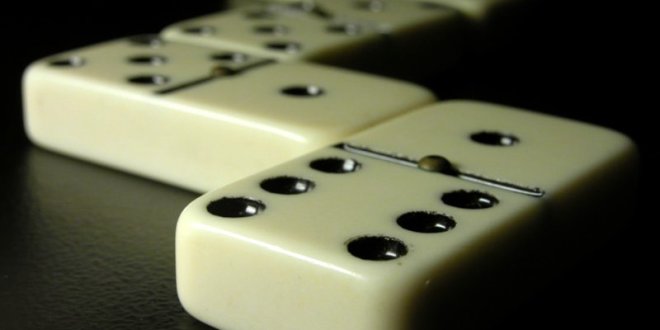Dominoes have been used in a variety of game formats as far back as the 18th century Italy, where Italian merchants received them during trade with China.
The Basic Rules
Just like how you can play a variety of games with a deck of cards, dominoes also lend themselves to an array of gameplay formats. The most common style of play involves laying out tiles for either blocking or scoring games.
- Blocking games are the most frequently played format. In them, each player tries to empty his hand while also blocking the opponent(s)’. At the end of the game session, scores are tallied by counting the pips (the “dots”) in the losers’ hands.
- Scoring games utilize a different method than blocking games with a progressive tallying of points.
The Basics of Blocking Games
The most common format is a two player game with a double six set of dominoes. All 28 tiles are shuffled pips down into the “boneyard.” Each participant then draws seven; the rest are unused. Drawn tiles are usually placed on-edge so that each player only knows the value of his own pieces but everyone knows how many tiles remain in each hand. Play begins when one player plays, or “downs,” a tile, which then becomes the starting point.
From this point, tiles are played either adjacent to matching valued tiles or are extended by placing a tile end-to-end. Play ends when one player downs his last tile or when neither player can continue. In the latter case, the blocker scores all points that aren’t his own.
The Basics of Scoring Games
In scoring games, players earn points from tile arrangements, movements, or emptying hands. Most also use a draw game variant; if a player misses calling “domino” before his tile is downed, but another player calls it after the tile is downed, the first player draws an extra domino.
Draw Games
Draw games, or simply “Dominoes,” can be played within both variants, but players can draw any number of tiles from the boneyard before starting. However, a player cannot pass before the boneyard is nearly depleted. Scoring is totaled by the pip total of the loser’s hand, plus the boneyard’s.
Both formats can easily be adapted for additional players, with play shifting to either an individual or team style.
 Mind Gem
Mind Gem

